Low Speed Film, Fast Lenses by Max Marinucci
I don’t know if I am the only one to sense this but I believe that film, for the rest of us, has been making a tremendous resurgence. I truly believe that many photographers, whether hobbyists or semi-pro have started to get somewhat tired of the digital, money wasting rat-race and are once again enjoying the simplicity of film cameras and have lost some of the desire to buy the latest digital product every 12-18 months. I have even noticed more film bags waiting for pickup at my local CVS. Don’t get me wrong…digital is here to stay but film is back, in a big way.
Having said that, this is not another one of those digital vs film arguments. I personally still shoot both but I much prefer film for a variety of reasons. This article is for those black & white film shooters who want to extract the best out of their Leica glass (and not just Leica) or for those digital guys who really want that sharp no grain look and want to shoot some good old film again (or something new and different).
First of all, big plug to Maco/Rollei for giving us back some amazing film and also some great developers.
Like many of you, I like my fast lenses and I like to shoot them wide open. As far as lenses go, for as much as some people don’t like to hear it, film gives me the best look and results for my Leica glass. The problem with Leica film cameras though is a top shutter speed of 1/1000 which means that shooting wide open during the day (unless you have some nice cloud cover) requires SLOW film. In that camp, there aren’t many choices left, unfortunately. Technical Pan is gone and so is Panatomic X and Agfa APX 25. These amazing films used to give us amazing detail, tones, and little or no grain at all, while also giving us a chance to use fast lenses at the widest apertures to isolate subjects and play with depth of field….or get those BOKEH junkies to feel all warm and fuzzy 🙂
Rollei is now back with superb films like ATP 1.1 (which is essentially Technical Pan), Pan 25 (which is supposedly re-packaged Agfa APX25) and Ortho 25 for those wild about orthocromatic looks (I know I am sometimes). But, what I find really exciting, is the use of their developers and especially RLS (Rollei Low Speed Developer). This amazing developer is little known and, while not cheap, it can be put to great use with easily available and cheaper films. Two emulsions that truly stand out with this combination are Ilford Delta 100 and Kodak TMax 100. Exposed @ 50ISO, they give us the opportunity to shoot with some great lenses at maximum apertures, with good lighting, while delivering truly amazing tones, detail and virtually no grain. Also, for those who are into scanning their own negatives (and there are quite a lot of us) and don’t have a dedicated (and expensive) film scanner like the Nikon 5000/9000 or the crazy Hasselblad X1 or X5, these films are the perfect choice if you are doing enlargements since they do make up for any shortcomings of various flatbed scanners.
Now, all of this also implies that you would be doing your own developing (which is a piece of cake, as outlined in my previous article), as I doubt you’d find a lab using Rollei developers. Also, for those who are not interested in this particular developer, good old, cheap Rodinal @ 1:100 or 1:300 dilution ratios gives very impressive results, albeit a TINY bit more grain and different tonalities . Another benefit or Rollei RLS developer is the fact that the developing process is not really open to much interpretation. You would basically follow the timing guidelines for different films as outlined on the bottle, with one slow and gentle inversion every 30 seconds. Stop, fix, wash, dry as usual and you’re ready to scan.
Master Erwin Puts talks about the amazing combination of Rollei RLS + Delta 100/Tmax 100 in this more technical article, if anyone is interested: http://www.imx.nl/photo/Film/page123/page123.html. While this is a very informative article, (as always), I am here to show some real world examples:
Here are two shots taken with my M3 and the fabulously underrated 135mm Leica Tele Elmar f4 (read our friend Aswin Rao’s great article about this lens), Ilford Delta 100 @ 50ISO + Rollei Low Speed Developer at f4 aperture: As you can see, the crispness, detail, and tones are simply amazing. These were scanned with my Epson V750 and you can imagine what a true optical print would look like.
When it comes to Rollei film, my favorite is Pan 25. It is the perfect replacement for those who are still sad about losing Agfa APX25. When developed with Rollei RLS developer, this baby can be shot at ISO12!! Everyone loves to talk 200,000ISO with digital gear but frankly I am more interested in low speed and using my fast lenses in the middle of a bright sunny day. Amazing stuff can be achieved, especially if you own a Noctilux.
Here is one taken with my M7, a classic Noctilux @ f1 and Rollei Pan 25 shot @ 12ISO and developed in Rollei RLS. Again, 3:00 pm with barely a cloud in the sky and I’m shooting @ f1 with just a 022 yellow filter.
This example is with a 75mm Summicron Asph
Rollei ATP 1.1 (Advanced Technical Pan) 32ISO: this is more of a specialty film but I truly love its sharpness, almost painful details and contrast. It is also a trickier film to expose, with highlights easily running away because of its limited shoulder. This can be easily corrected by slightly underexposing and pulling development time a bit (10% will suffice). It is virtually grainless, with Spur Orthopan having a minor lead in that department. Also, much shorter fixing times and dilution must be used because of its lower silver content. Also, no wetting agent, or very diluted (distilled water a MUST for all processes here). I am a big fan of this film when I am not looking for tripod hugging and I just want to shoot wide open with no grain and interesting tones/contrast.
Technically, the best developer for this film is the specialty one by Rollei but I frankly don’t see the need when good old Rodinal @ 1:300 dilution gives results such as this:
Shot with a 50mm Summilux Asph and Leica M3.
Coupled with the amazing 50mm Summilux Asperical, ATP1.1 is able to extract huge amount of detail, texture and tone, with zero grain (unless you’re magnifying 100x). Obviously, this is also an amazing film for portraiture but be careful because every skin imperfection will show with painful details.
This was taken at sunset with a 28mm Elmarit and developed with Rollei RLS (botched development a bit but still delivered a fine image)
In closing, I am not sure how many film shooters are aware of the amazing possibilities of low speed film with Leica’s current lens lineup so I hope this can bring some awareness and entice photographers to exploit all the creative options available. There is much to be excited about so get out there and have some fun!
One last note on the other side of the spectrum…low speed and long exposures: one film seems to be king here in the reciprocity failure (or close to absence of) department and that is Rollei Pan 25. For exposures of between 10 and 100 seconds, it only requires a 1 1/2 stop compensation and 2 stops for exposures over 100 seconds. Not bad at all. Here is a 120 seconds exposure shot with the M7 and Wide Angle Tri Elmar
From Steve: Thanks Max for another great and informative article on film. I can’t wait to try out some of this film for myself and will be ordering some ASAP, and of course processing in my bathroom just like I used to do. THANKS!

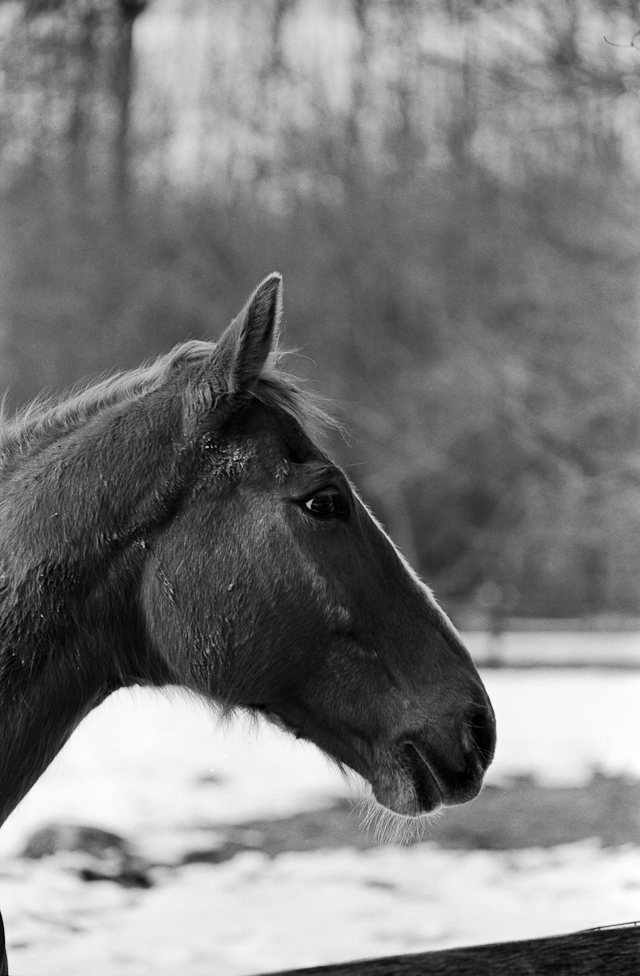

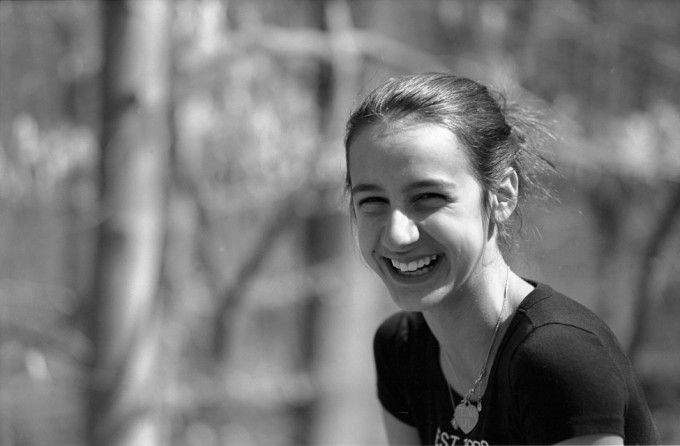
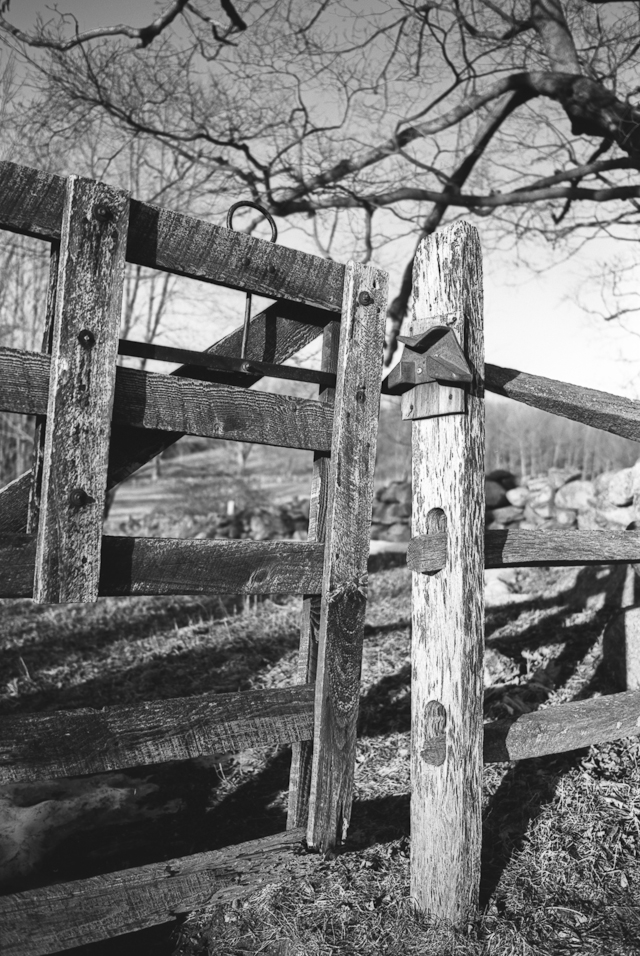
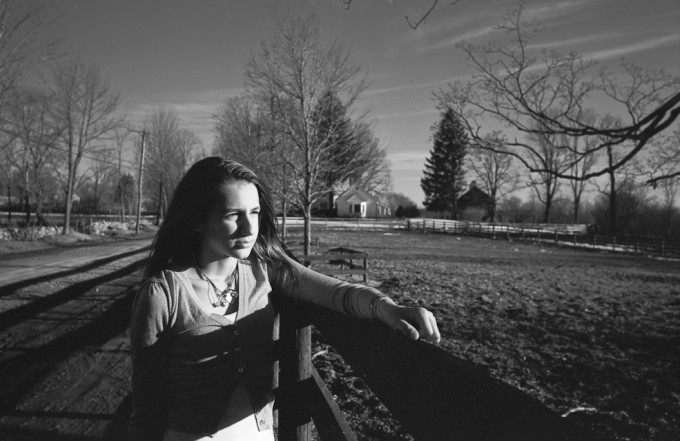
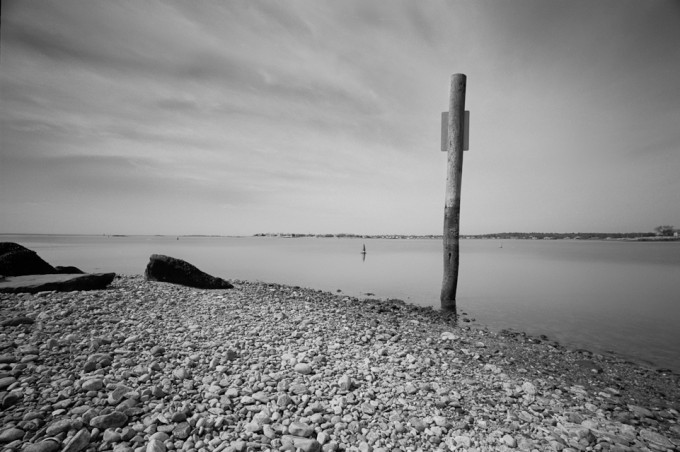


Great article, which I seemed to have come across somewhat late. I have M6 on the shelf now for some time. Last used with my only remaining role of Kodechrom just in time to get it developed in the last month it was possible. I love b&w film, but have no desire to develop it myself. I am willing to pay, but I have yet to find any commercial lab that could develop it well enough. So, is there any lab that you know of that could do this well enough to justify trying again? Either your own or someone else’s experience. I already believe that the best alternative is to do it yourself. But if I could do it, then surely there must be one lab that could do it for me. Thanks in advance. Larry K
Great article. Thanks.
i haven’t started developing my film yet, but i’m right there with you – i recently shot some ortho with my MP/F1 and found the results to meet my expectations (super sharp) see some of them on my flickr… beambang
Karen…no problem at all. My pleasure!
John…that’s one wonderful tip right there. Strange, yes, but like most old fashioned remedies, I am sure it works wonders. Thanks!!!
To fix scratch lines on the back of film, the time honoured (I’m a Brit!) way was nose grease! Just rub your index finger on the outside of your nose and then gently work it into the back of the negative. I understand it works because the grease has the same refractive index as the film base. By transmitted light, the scratch lines just disappear.
I offer this for what it’s worth.
Best wishes.
Thanks for all the info Max, and for responding to all of the follow-up questions!
By the way, another tip and a little more technical…for anyone wishing to try Rollei ATP 1.1 (Advanced Technical Pan) PLEASE save yourself extra aggravation and expense and DO NOT use any of the Rollei developers. Stick with cheap old Rodinal to get great tones, no grain and, most of all, a clean negative with no hassle. Yesterday I tested a roll with Rollei RLC developer (low contrast developer) and the negatives are filled with the infamous “black pepper” spots. According to Rollei, this has to do with the quality of the water and/or dirty/contaminated processing equipment. It’s all bullshit if you ask me. I firmly believe that the problem is in the developer itself and/or how it interacts with the emulsion. Solarization is also another prevalent problem. None of this makes sense since I am able to get perfect negatives with the film exposed @ISO25 and developed with Rodinal @ 1:300 dilution for 12 minutes with ONE inversion every 30 seconds for the first 10 minutes. Rollei ATP 1.1 is a wonderful film that far exceeds the limits of Leica and Zeiss lenses in terms of resolution but its combination with Rollei developers is somewhat of a failure and its use too cumbersome to deliver acceptable results.
Hi Scott,
Happy to hear that you’ve found something useful there and thanks for the kind words.
For the money…I wish 🙂
Seriously though, one point I do want to make here: Steve has a truly fantastic site that has become a destination for many who are not into too much technical BS. There is also a sizable crowd who seems to enjoy film and good old fashioned, simple photography. I do not get paid to write these articles, and I don’t receive any perks of any sort. I truly enjoy sharing tips and experiences with like-minded folks and it helps Steve grow this wonderful place. I don’t even sell any of my prints (I have been asked numerous times but I don’t feel like turning this into a business…maybe one day, with a mid life crisis 🙂
Oops! Just read Max’s other article and discovered that Ilford’s method is pretty much what Max recommends.
Oh well, guess it proves Max isn’t just making this stuff up. You know, for the money.
Seriously, I’ve been shooting film since 1970, and I still learned something from Max’s article (the drying film in the shower trick). It’s a great article, and it lacks the I’m-right-you’re-dumb-ism that is sadly common on the interwebs.
I hope he’ll write more.
Elaine, you must have really expensive water!
Anyway, it’s not necessary, or even desirable, to run water for 15 minutes. Ilford recommends the following washing process. They claim (and I agree) that it both uses less water AND more efficiently removes fixer and other chemicals from film.
“After fixing, fill the spiral tank with water at the same temperature, +/– 5ºC (9ºF), as the
processing solutions and invert it five times. Drain the water away and refill. Invert the tank ten times. Once more drain the water away and refill. Finally, invert the tank twenty times and
drain the water away.”
Ilford did a great deal of research on the subject, and this process is the result. It’s more repeatable and consistant than the traditional method of dribbling water into the tank until it feels done. It’s the same for all films.
Good article! Film offers a look that digital just can’t quite duplicate. In high volume developing the stuff is an environmental nightmare, but your typical Leica user isn’t like your enthusiast bird or sports shooter for sheer quantity of exposures. Hopefully, there will be enough of a market in the future to motivate companies to find chemicals that are more benign to the environment.
Hi Sergey..Thanks for the very kind words and I am flattered to have inspired you to shoot film. I am glad you are enjoying it and from what I can see, it suits your vision quite well already. As far as developers, it can get a little crazy but I like to keep it somewhat simple. A great online resource is digitaltruth.com. Aside from Diafine, I believe that if you narrow it down to HC110 and Rodinal, you would have all the bases well covered. Everyone has their favorite, such as XTol, D76 and the many from Ilford but, like I’ve said, it can make you a little crazy so, unless you really feel like experimenting, if you stick to Diafine, HC110 and Rodinal you are doing just dandy. Also, I NEVER use a chemical stop bath, with any developer. Water is just fine. One minute (30 seconds, dump, refill and another 30 seconds) and you’re good to fix.
Karen…Yes, it can be a source of confusion so I will try to simplify. Essentially, when you are shooting Tri-X below box speed (400) @ 320 you’d be slightly overexposing. Why do this is debatable, with different schools of thought. From claiming that Tri-X really is a 320ISO in reality, to giving better shadow detail. If you ask me, it doesn’t make much of a difference and you can certainly shoot @320 and develop as if you’d shot @400. Now, in the case of certain developers, like the Rollei Low Speed that I’ve mentioned in the article, you are forced to expose at half box speed (400 becomes 200, 25 becomes 12, etc) because of the inherent characteristics of that specific developer. To make a long story short, if you shot every film at nominal speed, you’d be doing just fine. Obviously there are other exceptions, as in the case of wanting to shoot at lower ISO and use larger apertures on the lens, which then would mean adjusting developing time accordingly. Hope this helps…and if it doesn’t, let me know 🙂
Nacho…that would be cheating! 🙂
Kidding aside, we can certainly use ND to bring down the amount of light entering the lens and therefore use faster films, or to achieve certain looks. In that case though, we have quite a different set of tonalities versus using slow emulsions. Obviously using Delta 100 with a .09 ND (3 stops) is not the same as using Rollei Pan 25 or Tri-X with the same setup instead of using Delta 100 without filtering. Different solutions for different tastes, looks, tones and resolutions.
Ryan…it sounds like you have something in the transport mechanism somewhere that’s scratching your film. And Ryan is correct..careful blowing too close to the shutter. Forgot to mention to go gentle and do it from about 12 inches around that area.
Thomas..you’re welcome! Sorry that you cannot get some of these film/developer combos down there. You may want to see if B&H ships overseas? Not sure.
Thanks for a a lot of useful information, esp. since a lot of photographers here in Jakarta still shoot analogue. Unfortunately it’s rather hard to get the films and developers you mention.
Thomas
If the line goes through the entire roll then you have scratches. Double check all areas where the film comes into contact with the camera: pressure plate, rollers and frame opening. Take a piece of your film that was developed and line it up over the frame opening this should give you clues to what areas are causing the scratches. Be careful using compressed air around the shutter blades. Too much high pressure pushing on the blades could damage the shutter or lodge something you don’t want into them. Another area to double check is how you are loading the film into the processing tank. By the way great portrait Jonathan, a great article Max and thanks Steve for posting these articles. Ry
BTW – Max, thanks or recommending Dev Chart. It is a great application and really helped me with the process. Especially since I was shooting Tri-X 400 and you recommended Ilford.
Thank you Max, I do believe they are on the entire roll. I will clean the camera before another roll. The lines were worse, I had tried to clone/rub them out as much as possible. I am still getting used to film, but it has been a lot of fun and the results are spectacular.
great article
but what about ND filters ? I use those alot to shoot wide open at sunny days
Thx for the article Max. There’s something that’s always confused me and I hope you can clear it up. I’ve often read things like “I used Rollei 25 and rated it at 12 ISO”… (I’ve seen that too with ‘I use TriX 400 but rate it at 320…’). What does that mean? For example, I use a roll of 400 speed film, but set my ISO dial to 320? When I develop it, should I develop it as 400 speed? Or do I have to develop it as though I shot a roll of ISO 320 speed film? I realize this is a newbie question, but one that blocks me every time I read an article on film.
Max, I enjoy reading your articles as you have a very Zen like approach to photography and you have inspired me to shoot with film. I have to agree with you that film has depth, soul and character while a Leica rangefinder is simple and has certain magic over its user. I look forward to seeing your photos on Flickr as well your posts. Your samples you posted here are fantastic. I have a roll of Rollie Pan 25 in my camera which I will develop using Diafine as a test. Not having much experience with various developers I wonder if there is a list of qualities/properties of each developer anywhere? I picked Diafine as its kind of dummy proof and no need for temperature and time control and does not require a chemical stop bath.
Sergey
Francis,
any increase, no matter how small, keeps the coating gallies running so we still are able to get these great Film products.
Gary
Jonathan, if that is the case, before you do anything else, open the back of the camera and give it a few shots of “dust off” (those air in a can things) to blow away any possible specks which could be scratching your film. Always a good idea to do that type of maintenance on a regular basis.
Hi Jonathan. I am happy to hear that you’ve found the article useful and you’re enjoying developing. The picture above looks great, with plenty of character and superb tones. I always love green/blue eyes rendered with b&w film. Just beautiful.
as far as the lines…hmmm, think I see what you mean as I can see one going through it and visible near the girl’s right eye. It looks thin and straight so it is certainly not a developing issue or light leak. The only thing that comes to mind is maybe a speck of dust or something stuck to the transport mechanism (spools) on your camera and that is scratching the film. Is the line running throughout the whole roll at the same spot?
Max I bought the stuff from the other article and developed my own film! I am very happy. However, I have a question. I seem to have horizontal lines on my negatives. I will try to post an image. I am very happy with the result and honestly, the lines do give some character, but I would like to know how to remove them.
I am shooting with my old Canon Rebel G, as I do not own a Leica film camera. However, I am saving for an m6.
Thanks so much MAX. I love developing my own film
[img]http://farm3.static.flickr.com/2730/4492860376_e99f4c45c1.jpg[/img]
…and if anyone is interested in a few more Delta 100 examples, I have just posted 8 pics here from a roll just developed last night and scanned this morning…
http://www.flickr.com/photos/leicaman/
Thanks so much, Joseph. Happy that you have enjoyed reading. Have not tried Efke film yet..but I am sure I will at some point.
Fantastic! Steve this is why your website is so great. Where else do you get this type of article! Max thank you for the great article and beautiful shots. What are your thoughts on Efke film?
Hieu,
Thanks! Ilford PanF+ (50ISO) is a WONDERFUL film. You can shoot that @ 25ISO easily and develop in Rodinal, or Rollei Low Speed if you can get it there. Just to give you an idea, these were shot with PanF @ 25 speed and developed with Rollei RLS. They are, from the top, frames 3,4,5,and 6. They are 68 to 120 seconds exposures so it also works very well in that department with no major compensation.
http://www.flickr.com/photos/leicaman/page4/
As far as scanning, I just scan in 16 bit grayscale. Everyone has a favorite method but that works just fine for me. Obviously, digital ICE does not work with b&w negatives but I never have dust problems and minor imperfection can be corrected in Lightroom, PS or Aperture.
Hi Elaine, that’s pretty much correct. On film Leicas, we’re limited by a top shutter speed of 1/1000 which makes it hard to work at large apertures (f1, f1.4, f2) on a bright day and with most film. So, whenever you want out of focus backgrounds to isolate your subjects, to create certain looks, while also minimizing grain and achieving high sharpness and detail, films such as the ones in the article fit the profile. Yes, technically, with a 1/8000 shutter speed you would be able to use faster film (such as Tri-X and others) with large apertures and in bright light, but you’d obviously have more grain, less detail, etc. As always, there are trade-offs but it’s all good to achieve any particular look or tone etc.
As far as water running for 15 minutes…NO WAY! As stated in my article, I use ONE jug of Poland Spring distilled water for each developed roll….and you even have a little leftover. I never use tap water, as the mineral content here is just too much and it trashes my negatives. Washing the film is what would require the most water but just follow my guidelines in the other article and you’ll be fine.
Hi, nice article. Rollei film is a bit hard to get here where i live, how does it compare to the low speed ilford, e.g. 50 pan-f? just wondering whether it is worth it to import some of it.
Also, it would be good if you give us some recommendations on how to scan black and white negatives and get the best results. e.g. scan as color negs and convert in PS, or scan as black and white negs? which bit settings (is higher really much better, or would i be wasting scanning time?)? should digital ICE be turned off? etc..
regards.
Thanks, Max. I understood most of it except the use wide open apertures and slow film. I know landscape photographers love the slow film for more details, though they use tripods and smaller apertures. I just wasn’t connecting the wide aperture bokeh with slow film. I’m figuring it out that it’s the lack of faster shutter speeds on a Leica film camera that would make you use the slower films. Correct? Now, if you had a shutter speed of 1/8000, then you’d be able to use a faster film. It’s been a while since I’ve used film. I’ve never used a leica camera. All of my cameras had faster shutter speeds. (all except the Rolleiflex TLR which had 1/500).
I read the links on developing. The only issues i’d have would be running my water for 15 minutes! My water bill would be sky high! Is there a way around this? Do you somehow run water that recycles, like a fountain? I know, silly question.
Thanks so much for your help, and I’ll be sure to ask questions!
Oh thanks Max for taking the time to share this info
@Gary…
As posted elsewhere at Kodak, the digital division made 35M$ in profits and the film 5x that. This is from their annual report, no insiders here. Like driving with a shifter, we still enjoy it and even added tiptronic to bring back the fun factor…But is it the same
Thank you all! Steve has a great site here and I am very happy to be able to contribute and share knowledge with you wonderful people.
@ Dwight…sorry about that 🙂
@ Oliver..You are very welcome and I am happy you have enjoyed it and found it useful. Tech Pan was another sad departure but ATP 1.1 just as good and some people swear it is even better. I think it is a fantastic film that would deliver some scary good looking optical prints. It scans wonderfully as well so there is plenty to have fun with for us mere mortals.
@ Elaine..What you are looking for is right here my dear. There is a link above to the first article I have written for Steve “How to develop, scan and print..with no darkroom required”. I think that you will find plenty of very useful information there to get you going with developing your own film. And, if you have any questions or need extra tips, PLEASE fire away and I will do my best to help.
To answer your ISO question: the lower the film speed, the more light you need to expose. Therefore, either slow shutter speeds or larger apertures. Obviously, for landscape and still subjects, and when you want your background and foreground in focus, you would opt for small apertures (f5.6 and above) to get the required depth of field and overall sharpness. But, to create those out of focus backgrounds (which you can certainly achieve with your Summicron @ f2) and not use a tripod during a nice sunny day, you need slow speed film (low ISO number) such as the ones I’ve outlined above. You could also use a faster film such as Tri-X and others and bring down the amount of light reaching the film by using a Neutral Density filter of at least three stops but it gets a little more complicated. Again, don’t hesitate to ask if you anymore questions.
@ Gary…I am very glad you’ve found it interesting and useful. I am amazed, but not very surprised, that so many people are enjoying the wonders of film again.
Results from using RLS/CG512 with TMY are much more impressive than with TMX and Delta 100. The two latter films are so fine grained that they are difficult to improve upon.
With TMY the grain is just as fine as with TMX and finer than with Delta 100. Add to that, that the effective film speed is higher by 1.5 stops. That, to me, is a great advantage.
I have not done an in depth test with Delta 100, but with regard to resolution, TMY is probably even better than TMX.
I’ll be concluding my comparative test next week and will post my final results then. They will include a comparison with TMX in Xtol 1+1 and SD2525, a developer that gives very crisp and three dimensional prints
Max,
I want to commed you for your great articles that you post on Steve’s site, this one in particular. It is so nice, that, one like yourself shares this kind of information with the readers. What you have posted here is invaluable for true fans of film, like myself. With regards to your comments on a resurgence of film usage, I’m told by friends at Fuji, that film sales of Fuji Velvia 50 alone were up almost 16% in fiscal year 2009. This alone makes a statement that film is making a resurgence. My contacts at Kodak and Ilford also mentioned there have been increases as well. Keep up the good work, we all need more articles like you have written here.
Gary
I would like to learn how to develop my own B&W film. I did it years ago in a college class, but I don’t recall any of it. So, how about an article for newbies? An article with simple instructions, with the easiest of chemicals, (most forgiving), and the film we should use. Take pictures of you doing it, or a video. That would be a cool video/article, and it would get a lot of people who visit this blog, to try it. I know I would. (I have directions given to me, but I’d like to know how to go about buying all this stuff, which to get, what is easiest, and then a play by play from purchase to developed negative.) I know many people in here would like the same.
I loved your article, and the pictures, even though I’m not privy to “plus or minus compensation” talk. I’m also a bit confused by the ISO 25 film. I have Summicrons. Can I use a ISO 25 speed film for them, and get good results? So, the slower the film speed, the more wide open you can use the aperture on the Leica film cameras due to the limited 1000 shutter speed?
Thanks sooo much for this article. I was waiting for steve to return from his trip to ask him if he’d put a roll of tech pan or rollei ATP 1 through his M6!
Tech pan ended up being my favourite film by FAR. It was pretty much the only film I ended up shooting it was sooo lovely and fine! I could out resolve a good medium format camera with my F4 nikon back in the day. I was so so upset when Kodak discontinued it and have never bought a digital camera because resolving at 320 lpmm it will happily capture more detail than even an S2…(theoretically, though I haven’t tried it personally)
Glad to see a few alternative films out there.
You’re fine article has caused me to make another order from Freestyle.
It’s good to see a small company that gives fine service to the analog niche of shooters.
I am telling you forget wine and go for photography ha ha excellent shots and I’ll show Isabella!!